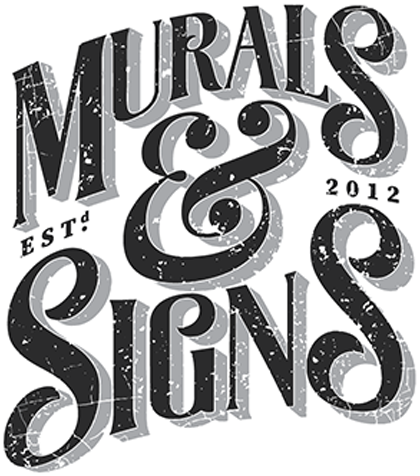Undertaking sign painting projects can be a creative and fulfilling endeavor. However, it’s crucial to prioritize safety while bringing your artistic vision to life. Protective equipment plays a vital role in ensuring your well-being during sign painting projects. This comprehensive guide explores the essential protective gear you need to keep yourself safe and comfortable while creating stunning and vibrant signs.
The Importance of Protective Equipment in Sign Painting
Engaging in sign painting projects requires more than just paint and brushes. Protective equipment safeguards you from potential hazards associated with paint, solvents, and the painting environment.
Minimizing Health Risks
Paints and solvents often contain chemicals that can be harmful if inhaled or come into contact with your skin. Protective equipment acts as a barrier, reducing your exposure to these potentially hazardous substances and minimizing health risks.
Ensuring Project Precision
Apart from health concerns, protective equipment can also enhance your precision and focus during sign painting. Unwanted paint splatters and discomfort can distract you from your creative process. Proper gear allows you to concentrate on your artwork, resulting in better outcomes.
Essential Protective Equipment for Sign Painting Projects
Equipping yourself with the right protective gear is the foundation of a safe and successful sign painting project. Here’s a breakdown of the essential equipment you need.
Respiratory Protection
Paint fumes and airborne particles can pose respiratory risks. Respiratory protection such as disposable masks or respirators with appropriate filters helps prevent inhalation of harmful substances. Choose a mask that offers a comfortable fit and adequate filtration for the type of paint you’re using.
Eye Protection
Eye protection is essential to shield your eyes from paint splatters, debris, and other potential hazards. Safety goggles or protective glasses with side shields provide adequate coverage and prevent accidental eye injuries.
Skin Protection
Cover your skin to minimize contact with paint and solvents. Wear long-sleeved shirts and pants made from breathable materials. Consider investing in a painting smock or coveralls to protect your clothing and ensure easy cleanup.
Hand Protection
Your hands are particularly vulnerable during sign painting projects. Disposable gloves made from nitrile or latex provide a barrier against paint and solvents. For longer projects, consider reusable gloves designed for painting tasks, which offer both protection and dexterity.
Hearing Protection
If you’re working in a noisy environment or using loud equipment, such as power sanders, consider wearing hearing protection. Earplugs or earmuffs can help prevent noise-induced hearing loss and ensure your long-term auditory health.
Foot Protection
Closed-toe shoes with slip-resistant soles offer the necessary foot protection during sign painting. Accidental spills, sharp tools, and potential tripping hazards make sturdy footwear a must for a safe work environment.
Head Protection
While head protection may not always be required, wearing a comfortable hat or cap can shield your head from paint drips, debris, and potential accidents in a cluttered workspace.
Choosing the Right Protective Equipment
Selecting the right protective equipment involves considering factors such as the type of paint, the environment, and your personal preferences.
Material Compatibility
Ensure that the protective equipment you choose is compatible with the type of paint you’ll be using. Some paints or solvents may degrade certain materials, compromising their effectiveness.
Comfort and Fit
Comfort is key when it comes to protective equipment. Ill-fitting gear can be uncomfortable and may discourage you from using it consistently. Choose equipment that offers a snug yet comfortable fit, allowing you to move freely while maintaining protection.
Durability
Invest in high-quality protective equipment that can withstand the demands of your sign painting projects. Durable gear ensures long-term protection and value for your investment.
Ease of Use
Opt for protective equipment that is easy to put on, adjust, and remove. This encourages consistent usage and reduces the likelihood of skipping safety measures due to inconvenience.
Additional Safety Tips
In addition to wearing protective equipment, there are other safety measures to consider during sign painting projects.
Ventilation
Ensure adequate ventilation in your workspace to minimize the inhalation of paint fumes. If working indoors, consider using fans or opening windows to maintain fresh air circulation.
Work Area Organization
Keep your work area organized to reduce the risk of tripping hazards and accidents. Store paints, brushes, and tools in designated areas to maintain a clutter-free environment.
Proper Cleanup
Properly clean and store your protective equipment after each use. This ensures that they remain effective and ready for your next painting project.
Emergency Preparedness
Have a first aid kit on hand in case of accidents or injuries. Familiarize yourself with the kit’s contents and basic first aid procedures.
Conclusion
Prioritizing safety is paramount when engaging in sign painting projects. The right protective equipment not only shields you from potential hazards but also enhances your focus and comfort during the creative process. By wearing respiratory protection, eye protection, proper clothing, gloves, and other essential gear, you create a safe environment that allows you to fully immerse yourself in your artistic pursuits. Remember, a successful sign painting project is not only about the final artwork but also about the experience of creating it while ensuring your well-being.
